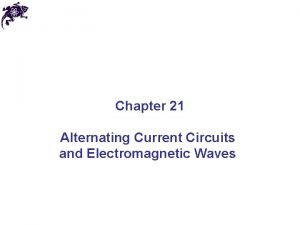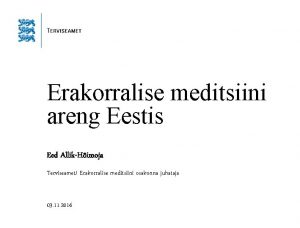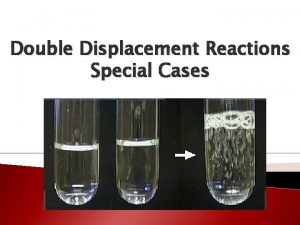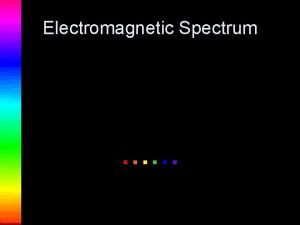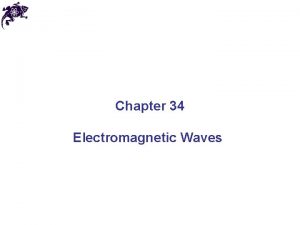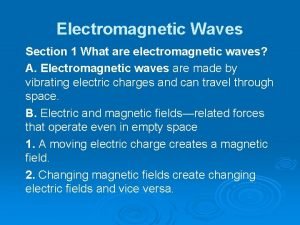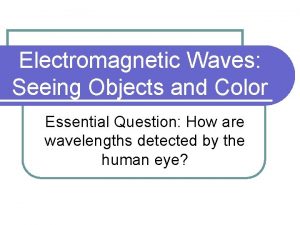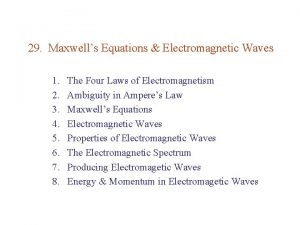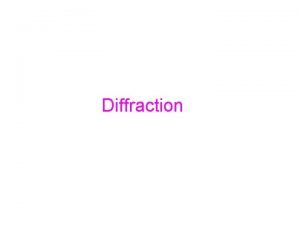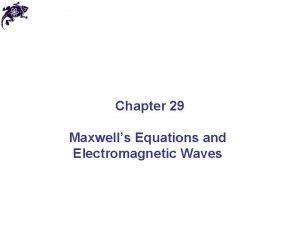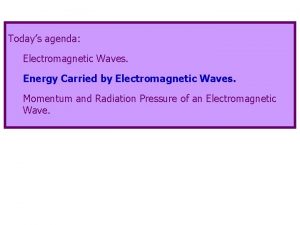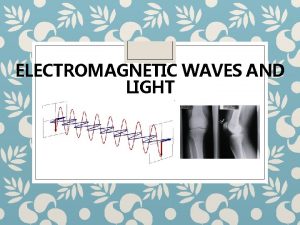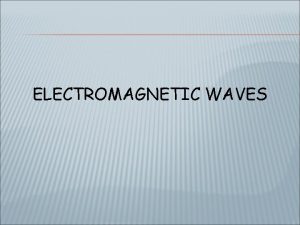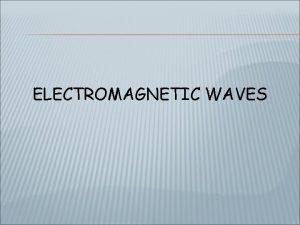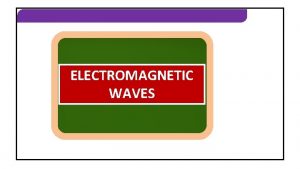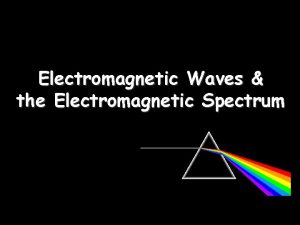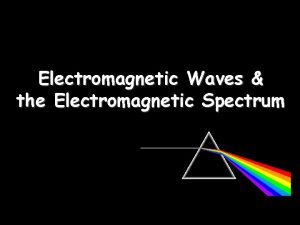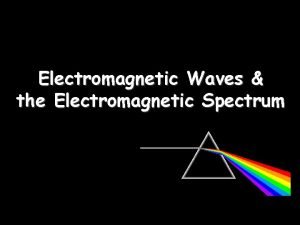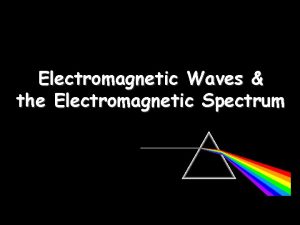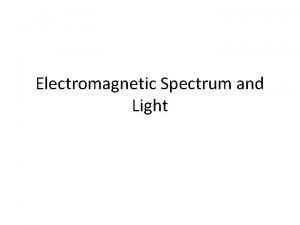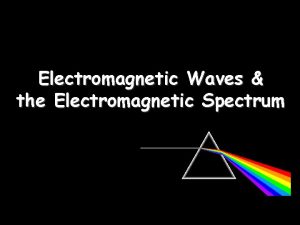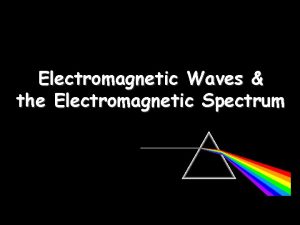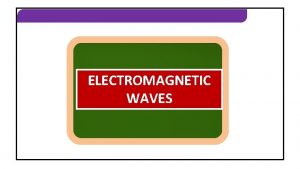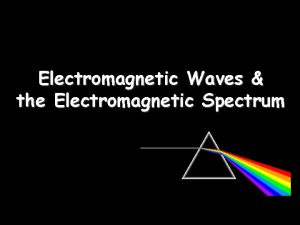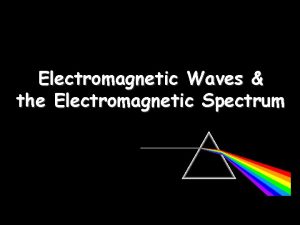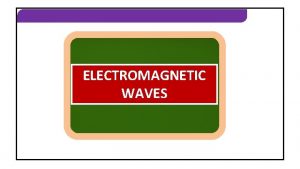EED 3507 Electromagnetic Waves Displacement Current Asst Prof
























- Slides: 24

EED 3507 Electromagnetic Waves Displacement Current Asst Prof. Dr. Özgür TAMER

Current Charges in motion, or currents, produce magnetic fields. When a current-carrying conductor has high symmetry, we can determine the magnetic field using Ampere’s law: › where the line integral is over any closed path through which the conduction current passes. › Conduction current is the current carried by the wire. › The conduction current is defined by:

Current Ampere’s law in this form is only valid if the conduction current is constant over time. This means that any electric fields present are constant as well. Maxwell recognized this limitation of Ampere’s law and modified the law to include electric fields that change over time.

Displacement Current Consider a charging capacitor: › The current I is decreasing over time as the magnitude of the charge on the capacitor and the electric field between the capacitor plates increases.

Displacement Current No conduction current passes between the capacitor plates.

Displacement Current Consider the two Amperian surfaces S 1 and S 2 bounded by the same path P. Ampere’s law says that the line integral of B • ds around this path must equal µo·I, where I is the total current through any surface bounded by the path P.

Displacement Current When the path P bounds S 1, the result of the integral is µo·I since the conduction current passes through S 1. When the path bounds S 2, the result of the integral is zero since no conduction current passes through S 2.

Displacement Current passes through S 1 but does not pass through S 2. Maxwell solved this problem by adding a displacement current Id to the right side of Ampere’s law:

Displacement Current Displacement current Id is proportional to the rate of change of the electric flux E. Electric flux E is defined as:

Displacement Current As the capacitor is being charged (or discharged), the changing electric field between the plates can be considered as a current that bridges the discontinuity in the conduction current.

Displacement Current Adding the displacement current to the right side of Ampere’s law allows some combination of conduction current and displacement current to pass through surfaces S 1 and S 2. Ampere-Maxwell law:

Displacement Current The electric flux through S 2 is: › E is the uniform electric field between the plates. › A is the area of the plates. The conduction current passes through S 1.

Displacement Current If the charge on each plate at any instant is Q, then:

Displacement Current The electric flux through S 2 is:

Displacement Current The displacement current Id through S 2 is:

Displacement Current The conduction current is equal to the displacement current: I = Id Magnetic fields are produced by both conduction currents and changing electric fields.

Importance of Displacement Current It is possible for electromagnetic waves to travel through a material – even in a vacuum It makes Electromagnetic Radiation possible Even life on earth depends on displacement current The radiation of heat is an electromagnetic wave, for example from the sun

Example 1 An alternating current (AC) voltage is applied directly across an 8 F capacitor. The frequency of the AC source is 3 k. Hz and the voltage amplitude (Vmax) is 30 V. Determine the displacement current between the plates of the capacitor. Angular frequency of the oscillation is: = 2· ·f Voltage as a function of time: V = Vmax·sin( ·t)

Charge on the capacitor is Q = C·V

Substituting: The displacement current graphs as a sine wave with a maximum value of 4. 5239 A.

Example 2 A parallel-plate capacitor has circular plates of area A separated by a distance d. A thin straight wire of length d lies along the axis of the capacitor and connects the two plates. This wire has a resistance R. The exterior terminals of the plates are connected to a source of alternating voltage source V = V 0 sin(�t)

a) What is the current in the thin wire ? › The current in the thin wire can be obtained using Ohm's law

b) What is the displacement current through the capacitor ? › The voltage across the capacitor is equal to the external emf. › The electric field between the capacitor plates is therefore equal to

The electric flux through the capacitor is therefore equal to The displacement current Id can be obtained by
 Rtog 3507
Rtog 3507 Sound waves are longitudinal waves true or false
Sound waves are longitudinal waves true or false Mechanical waves vs electromagnetic waves
Mechanical waves vs electromagnetic waves Energy that travels through
Energy that travels through Similarities of mechanical and electromagnetic waves
Similarities of mechanical and electromagnetic waves Difference between electromagnetic and mechanical waves
Difference between electromagnetic and mechanical waves What do all waves transmit
What do all waves transmit Lowest point of a wave
Lowest point of a wave Mechanical waves and electromagnetic waves similarities
Mechanical waves and electromagnetic waves similarities Alternating current circuits and electromagnetic waves
Alternating current circuits and electromagnetic waves Erakorralise meditsiini tehnik palk
Erakorralise meditsiini tehnik palk Welcar
Welcar Eed richtlinie
Eed richtlinie Single displacement vs double displacement
Single displacement vs double displacement Electron spectrum
Electron spectrum Wave frequency chart
Wave frequency chart Hertz experiment electromagnetic waves
Hertz experiment electromagnetic waves Section 1 what are electromagnetic waves
Section 1 what are electromagnetic waves Electromagnetic waves: seeing objects and color
Electromagnetic waves: seeing objects and color Right hand rule for em waves
Right hand rule for em waves Electromagnetic waves in water
Electromagnetic waves in water Section 1 what are electromagnetic waves
Section 1 what are electromagnetic waves Maxwell's theory of light
Maxwell's theory of light Energy density of wave formula
Energy density of wave formula A health inspector is measuring the intensity of a sound
A health inspector is measuring the intensity of a sound









